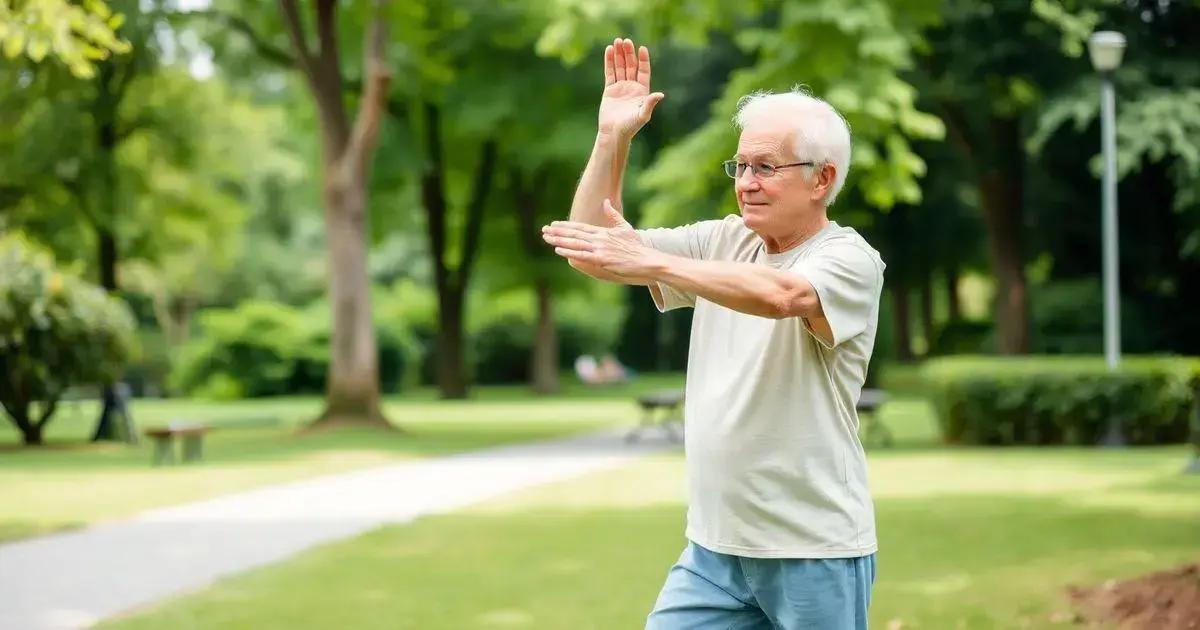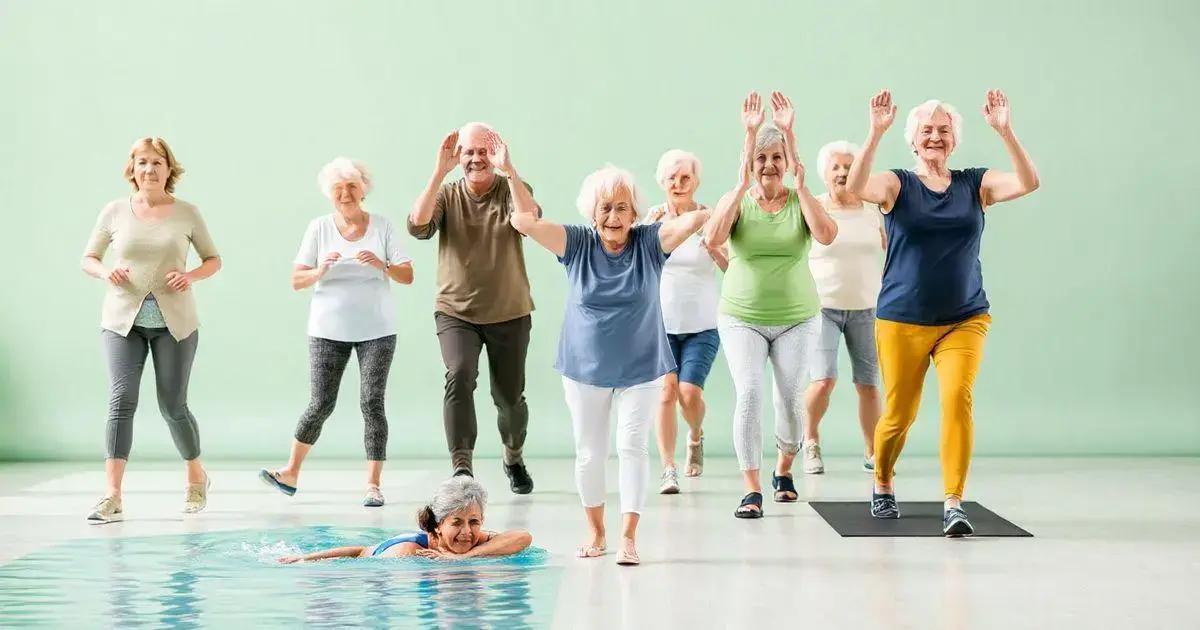The rise of low-impact workouts offers a gentle yet effective solution for aging joints, helping individuals stay active while reducing stress on their bodies. Popular low-impact exercises such as walking, swimming, and yoga not only enhance physical health but also improve flexibility, strength, and overall well-being, making them an excellent choice for older adults and those with joint concerns.
The rise of low-impact workouts for aging joints is becoming increasingly popular as people look to maintain their fitness without causing harm. These gentle exercises are designed to reduce stress on the joints while promoting strength and flexibility. In this blog post, we will delve into the different types of low-impact workouts available, explore their benefits for aging joints, provide tips on how to start, and highlight some popular exercises that anyone can incorporate into their routine.
Understanding Low-Impact Workouts

Understanding low-impact workouts is essential for anyone looking to stay active, especially as we age. Low-impact workouts are exercises that are gentle on the joints and often involve less stress than high-impact activities. This makes them ideal for older adults or anyone recovering from injury.
What Are Low-Impact Workouts?
Low-impact workouts include a wide variety of activities that minimize the force exerted on your joints. Some popular options include swimming, cycling, yoga, and Pilates. These exercises allow you to still achieve your fitness goals without risking joint pain or injuries.
How They Differ from High-Impact Workouts
High-impact workouts, such as running or jumping, put significant stress on the knees, hips, and ankles. In contrast, low-impact workouts maintain an active lifestyle while reducing the pressure on these vital areas. This is particularly important for older adults, who may have pre-existing joint conditions.
The Importance of Joint Health
As we age, our joint health can decline, sometimes leading to chronic pain or limited mobility. Participating in low-impact workouts helps to strengthen the muscles surrounding the joints, improves flexibility, and promotes overall wellness. Keeping active provides numerous benefits, including better balance and coordination.
Who Can Benefit?
Almost anyone can benefit from low-impact workouts, but they are especially well-suited for older adults, people with joint issues, and those recovering from surgery or injury. These workouts can be adapted to fit various fitness levels, making them accessible to a broad audience.
Benefits for Aging Joints

The benefits of low-impact workouts for aging joints are numerous and can greatly enhance your quality of life. These workouts not only promote physical health but also help with emotional and mental well-being.
Reduced Joint Pain
One of the primary benefits of low-impact workouts is the reduction of joint pain. Gentle movements help keep joints flexible without causing added stress. This is essential for people who experience discomfort during high-impact activities.
Improved Flexibility
Participating in low-impact workouts regularly can improve flexibility. As the muscles and joints become more limber, individuals can perform daily tasks more easily. Improved flexibility also decreases the risk of strains and injuries.
Strengthening Muscles
Low-impact exercises help strengthen the muscles around the joints. Stronger muscles provide better support, which can alleviate pressure on joints and reduce the likelihood of injuries. This support is vital for maintaining mobility as we age.
Enhanced Balance and Coordination
Balance and coordination tend to decrease with age, making falls more likely. Engaging in low-impact workouts enhances balance and coordination skills, which can lead to safer movement and fewer accidents. This can make a significant difference in daily life activities.
Mental Health Benefits
In addition to physical benefits, low-impact workouts can improve mental health. Exercise releases endorphins, which can enhance mood and reduce feelings of anxiety and depression. Staying active has the added benefit of promoting better sleep patterns.
How to Get Started

Getting started with low-impact workouts is simple and can be done at home or in a gym. Here are some steps to help you begin safely and effectively.
Consult with a Doctor
Before starting any new workout routine, it is wise to consult with a doctor, especially if you have pre-existing health conditions. They can offer guidance tailored to your needs and ensure your workout plan is safe.
Choose the Right Activities
Select activities that you enjoy and are comfortable with. Popular low-impact options include walking, swimming, cycling, and yoga. Trying different activities helps you find what works best for you. Enjoyment is key to staying motivated.
Set Realistic Goals
When starting, set achievable goals. Start with shorter workouts, such as 15-20 minutes, and gradually increase the duration. Keeping your goals realistic helps you to stay engaged without feeling overwhelmed.
Listen to Your Body
As you begin your low-impact routine, it’s essential to listen to your body. If you feel pain or discomfort, stop and rest. Modify exercises as needed to prevent injury and ensure a positive experience.
Incorporate Stretching
Always include stretching in your routine. Gentle stretching helps to improve flexibility and can prevent injuries. Spend a few minutes warming up and cooling down before and after your workouts.
Stay Consistent
Consistency is crucial for reaping the benefits of low-impact workouts. Aim for at least 3-4 days a week, but adjust based on your comfort level. Creating a schedule can help you stick to your plan.
Popular Low-Impact Exercises

There are many popular low-impact exercises that can help you stay active without straining your joints. Here are some excellent options to consider:
Walking
Walking is one of the simplest and most effective low-impact exercises. It can be done anywhere, and you can adjust the pace and distance to your fitness level. Aim for at least 30 minutes of walking a day for optimum benefits.
Swimming
Swimming offers a full-body workout with minimal strain on the joints. The buoyancy of water supports your body, making it an ideal choice for those with joint pain. Try different strokes to keep things interesting.
Cycling
Cycling is another fantastic low-impact exercise that can help strengthen your legs and improve cardiovascular health. You can enjoy cycling outdoors or use a stationary bike at home or in a gym.
Yoga
Yoga promotes flexibility and strength through gentle, controlled movements. Many styles of yoga focus on deep breathing and relaxation, making it a great option for reducing stress while improving joint health.
Pilates
Pilates emphasizes core strength and stability through low-impact movements. It can be a great way to enhance your balance and posture while protecting your joints.
Chair Exercises
For those with limited mobility, chair exercises provide a safe way to stay active. Simple movements such as seated leg lifts or gentle arm stretches can be very beneficial.
Embracing Low-Impact Workouts for a Healthier Future
The rise of low-impact workouts presents a wonderful opportunity for individuals, especially those with aging joints, to maintain an active lifestyle. These exercises provide numerous benefits, including reduced joint pain, improved flexibility, and enhanced mental well-being.
As we explored, getting started with low-impact workouts is accessible and can be tailored to any fitness level. Popular activities such as walking, swimming, and yoga can help you enjoy a routine that promotes health and happiness.
By incorporating these gentle yet effective exercises into your daily life, you can foster not only physical health but also an overall sense of well-being. So, take the first step towards an active lifestyle that respects your body’s needs and start reaping the rewards of low-impact workouts today.
FAQ – Frequently Asked Questions about Low-Impact Workouts for Aging Joints
What are low-impact workouts?
Low-impact workouts are exercises that minimize stress on the joints while still providing benefits like strength, flexibility, and cardiovascular health.
Who can benefit from low-impact workouts?
Individuals of all ages, particularly older adults or those with joint pain or injuries, can benefit greatly from low-impact workouts.
How often should I do low-impact exercises?
Aim for at least 3-4 days a week of low-impact exercise to gain the most benefits for your physical and mental health.
What are some examples of popular low-impact exercises?
Popular low-impact exercises include walking, swimming, cycling, yoga, Pilates, and chair exercises.
Can I start low-impact workouts if I have joint pain?
Yes, low-impact workouts are designed for individuals with joint pain. However, it’s always best to consult with a doctor before starting any new exercise program.
How do I get started with low-impact workouts?
Start by choosing activities you enjoy, setting realistic goals, and listening to your body. Begin with shorter sessions, gradually increasing duration and intensity.












